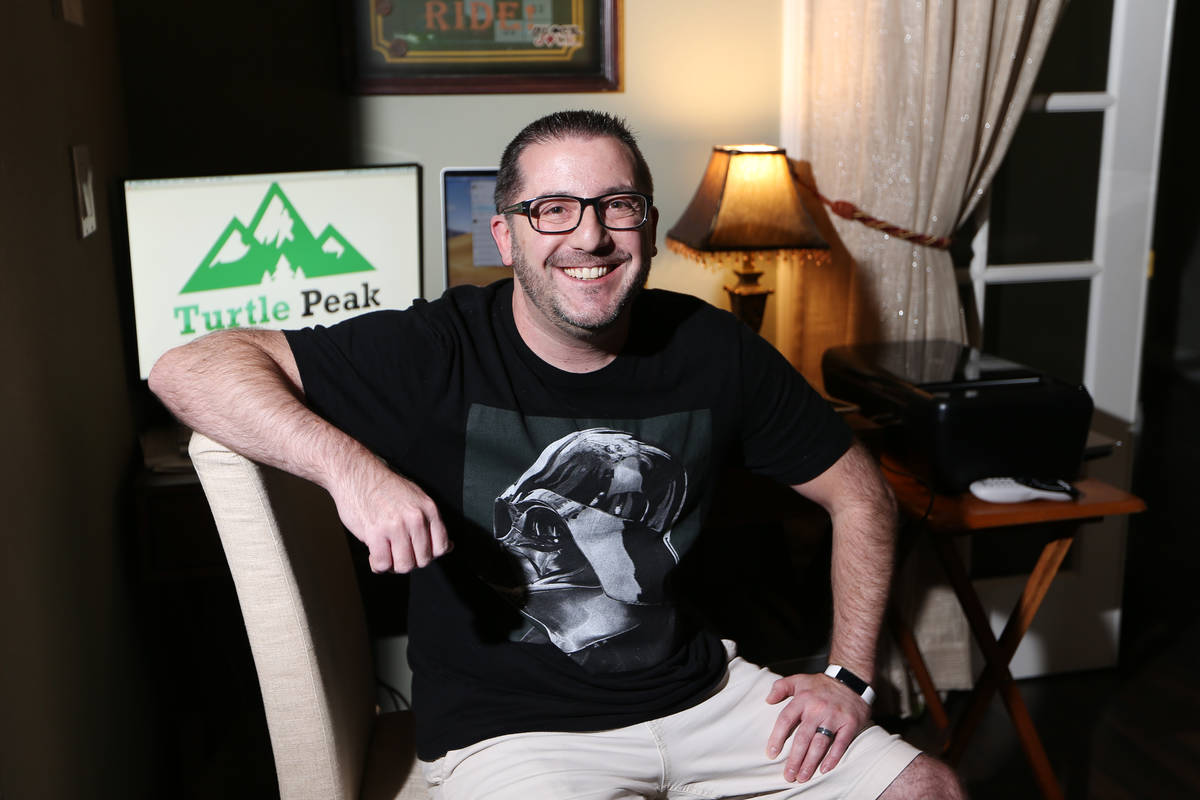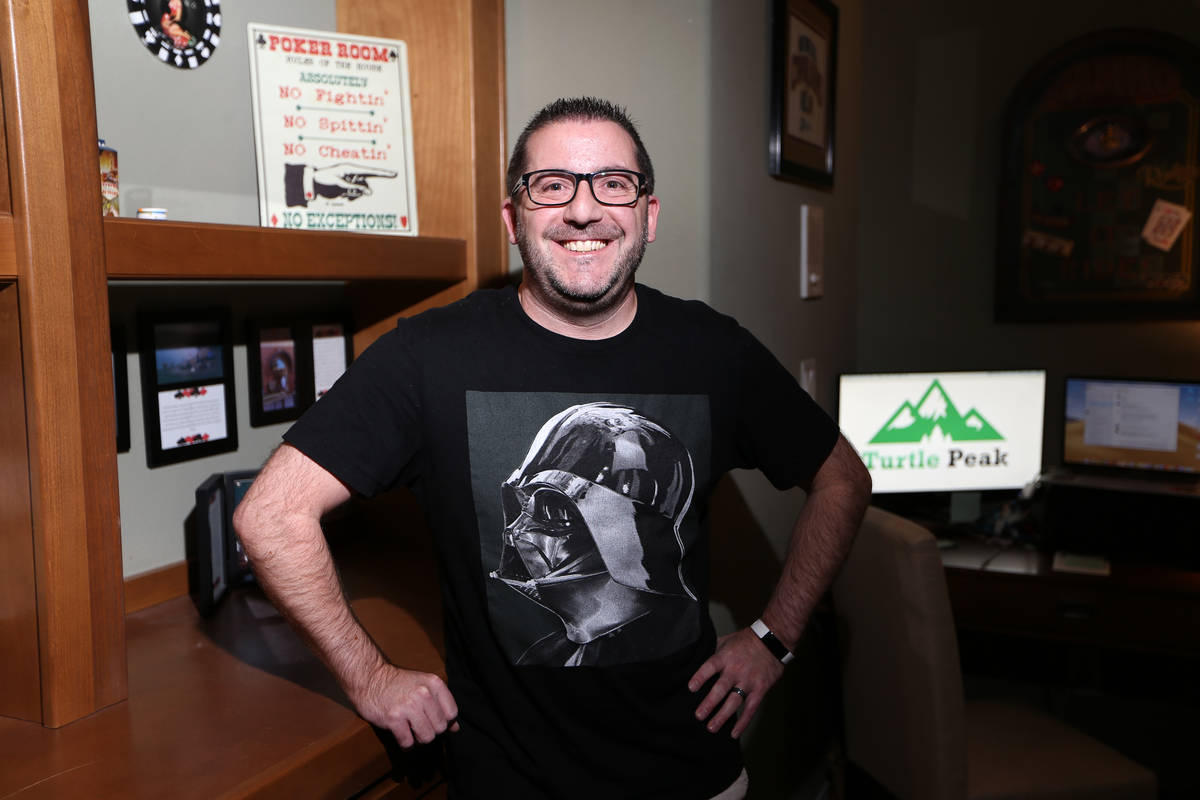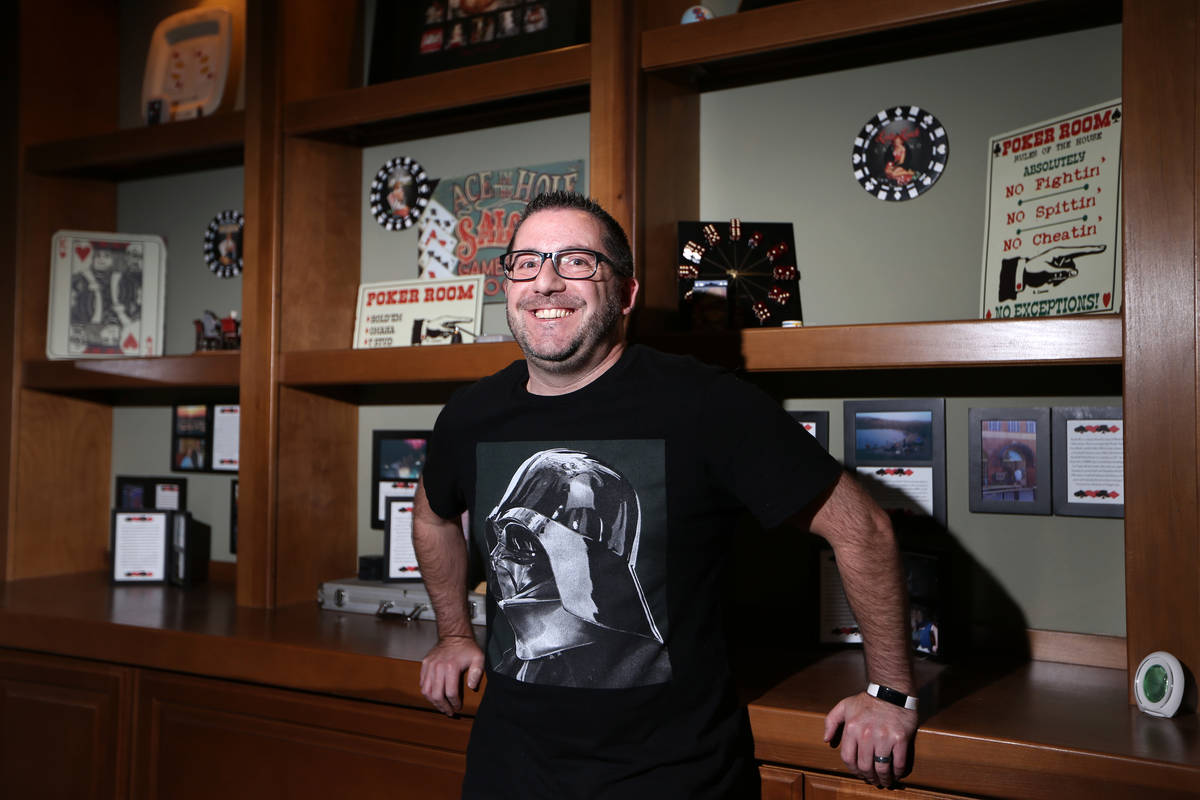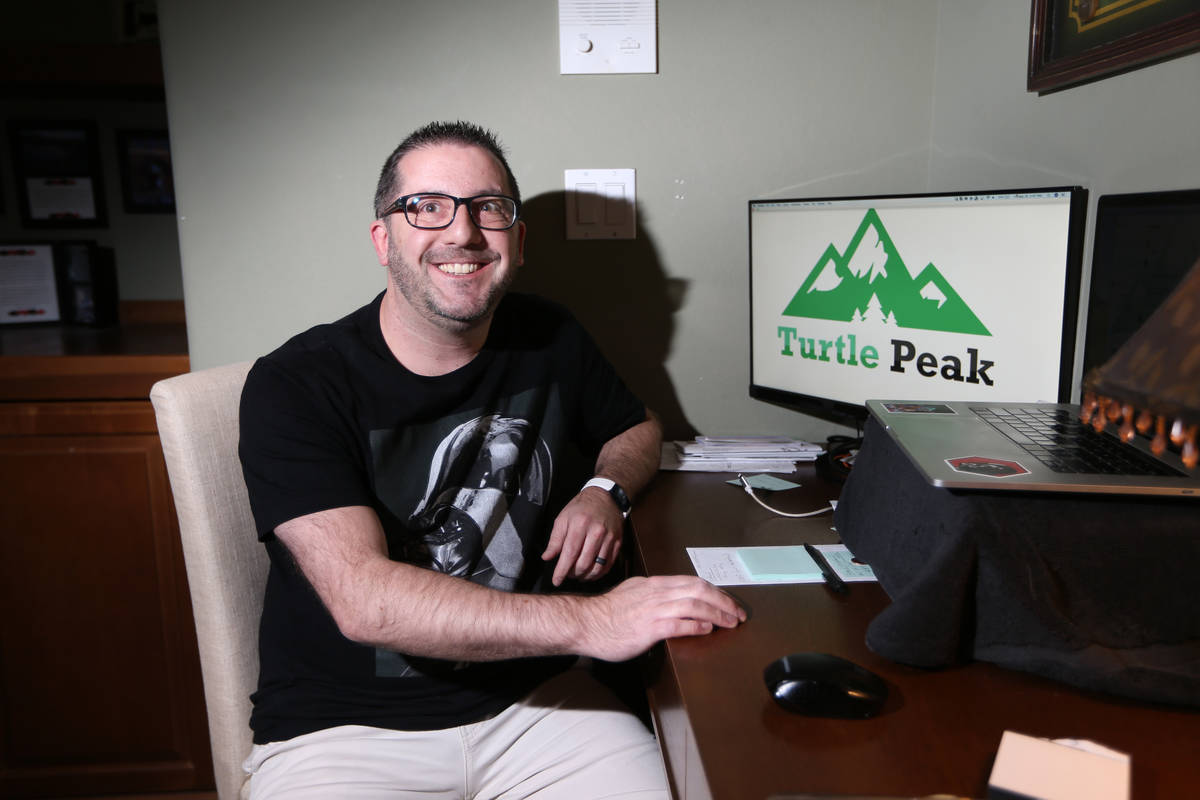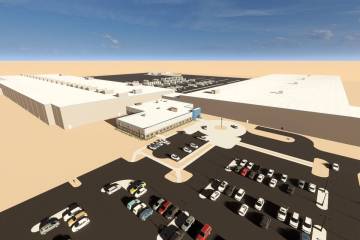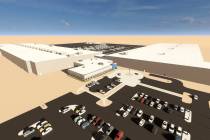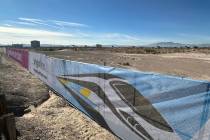Remote work is here to stay. What happens to empty office buildings?
Mark Nagle’s morning commute has been replaced with a few steps to his Summerlin home office.
The chief operating officer of call center Turtle Peak has been working from home since March, along with the rest of company staff.
“We’ve remained 100 percent remote (and) we made the commitment a couple months ago to continue as a 100 percent remote operation until it’s safe not to,” Nagle said.
The pandemic has put the idea of remote work to the test, and experts say the once not-so-mainstream setup is here to stay. While remote work has its upside, it poses a threat to the commercial real estate market.
“There’s no doubt in my mind that office space will be reduced for decades to come because Slack, Google, Twitter have already announced that even after the pandemic they’re going to keep part of their workforces remote,” said TransparentBusiness Chief Transparency Officer Moe Vela, a remote work expert. “The idea of working from home was not something most companies wanted to push for, and because people were forced to, it proved this concept could work.”
A recent survey from professional services firm KPMG of 315 global company CEOs with an annual revenue over $500 million found 69 percent of them “will be downsizing office space.”
Las Vegas-based employers like Turtle Peak also said they are reconsidering how to use their office space moving forward.
Testing 1, 2, 3
Nagle said employees started working remotely just before Gov. Steve Sisolak mandated the closure of casinos and other nonessential businesses on March 17.
It was the first time Turtle Peak’s entire office worked remotely, and so far, it’s working.
“We’ve actually hired almost 30 people since April, so now we have almost a third of our staff who have never been in our office,” he said.
The average number of employees working remotely at least part of the time is expected to more than double to 30 percent after the coronavirus pandemic, according to an XpertHR survey in September of 835 U.S. companies. The HR resource firm reported of the companies it surveyed roughly 12 percent of their staff worked remotely at least part of the time before the pandemic.
Nagle said Turtle Peak is considering giving tenured “high-level agents” the option to work remotely either on a partial or full-time basis. It’s a sharp contrast to how it operated previously, as being a call center agent is not “something that’s traditionally done as a work-from-home-type position,” he said.
Online retailer Zappos said its employees are working remotely until January, but it is exploring remote work as an option post-pandemic.
A Zappos spokesperson said in an emailed statement that the company is “working on building out permanent work from home and work from anywhere options in this newly remote-friendly landscape.”
Employers are increasingly finding the benefits of remote work outweigh the negatives, according to Vela.
“Every study shows employee productivity goes up,” he said. “Employers save on average $11,000 per employee per year in office-related expenses — so rent, equipment, travel and all of the operational (costs) that it takes to run an office in a traditional office space.”
He said workers benefit by having a better work-life balance since no daily commute means extra time in their day to spend with family. It also means job seekers like single parents, those with physical disabilities or those unable to afford transportation have a better opportunity to enter the workforce.
Negative space
The upside of a work-from-home model and its growing popularity has ripple effects on the commercial real estate market.
The U.S. office market is expected to lose about 145 million square feet by the end of 2021 — about 20 percent more severe than in 2008 and 2009 — as the country saw an estimated 1.7 million office job losses this year, according to a report released last week by Cushman & Wakefield.
The report cited “permanent effects” in the market as “more remote workers lead to less demand for office space per employee.”
It’s a trend already taking hold in Las Vegas.
“The market, especially in March and April, really kind of slowed down almost to a halt,” said Dan Palmeri of Cushman & Wakefield. “There were a lot deals at the finish line that were put on hold or those companies are now hitting the brakes a little bit.”
The number of building sales in Southern Nevada slowed significantly in the second quarter compared with the beginning of the year, according to a Colliers International report. During the first three months, the office sector recorded 30 building sales, but the number dropped to seven recorded sales during the second quarter.
Slow rise
The Las Vegas office market was booming before the arrival of the novel coronavirus in Nevada, according to CBRE Senior Vice President Amy Lance.
Lance said the area saw historically low vacancy rates, rental rates were climbing and landlords were providing fewer incentives since demand was strong.
“It was really heading in a great landlord market direction, and our vacancy rate in quarter one was the lowest it had been in over a decade,” she said. “The tenant demand was very high and our inventory was very low … . It was getting difficult to find (space) for tenants.”
A number of new office construction projects, particularly in the southwest, such as the 40-acre UnCommons mixed-use development, were in the pipeline — making Las Vegas an even more attractive market for local companies looking to expand and out-of-state firms hoping to relocate.
But the state’s subsequent shutdown in the first quarter and massive job losses have placed a question mark over the future of these new developments.
“No projects were completed and no new starts occurred during the second quarter,” according to CBRE’s second-quarter office market report. It said three projects totaling more than 260,000 square feet were underway, and planned projects expected to break ground in the next 12 months totaled more than 800,000 square feet.
“It’s been years since we’ve had any new construction for office space so that was exciting to see,” Sun Commercial Real Estate Inc. Chief Executive Cathy Jones said. “It’ll be interesting to see whether or not all these new projects that are planned are actually going to move forward or pause.”
With new construction slowing and some tenants able to stay in place — thanks to federal and state assistance programs geared toward small businesses — office vacancy has risen only slightly in the second quarter compared with the first quarter.
Southern Nevada saw a 12.5 percent increase in office vacancy, which Colliers said is expected since the office market lost more than 48,000 jobs, compared with 12.6 percent for the same period in 2019. The vacancy rate during the first quarter of this year was 12.2 percent, Colliers’ data shows.
It’s unclear how much higher it will be this quarter, as figures have yet to be reported.
For Turtle Peak, Nagle said he doesn’t anticipate scrapping the office lease altogether or reducing its 10,000-square-foot office.
“Some of the questions that we’re using this time to address is, ‘Do we need to have every single employee at the office for 40 hours a week?’ ” Nagle said. “We potentially may not have to move into larger office spaces as we expand.”
Contact Subrina Hudson at shudson@reviewjournal.com or 702-383-0340. Follow @SubrinaH on Twitter.



